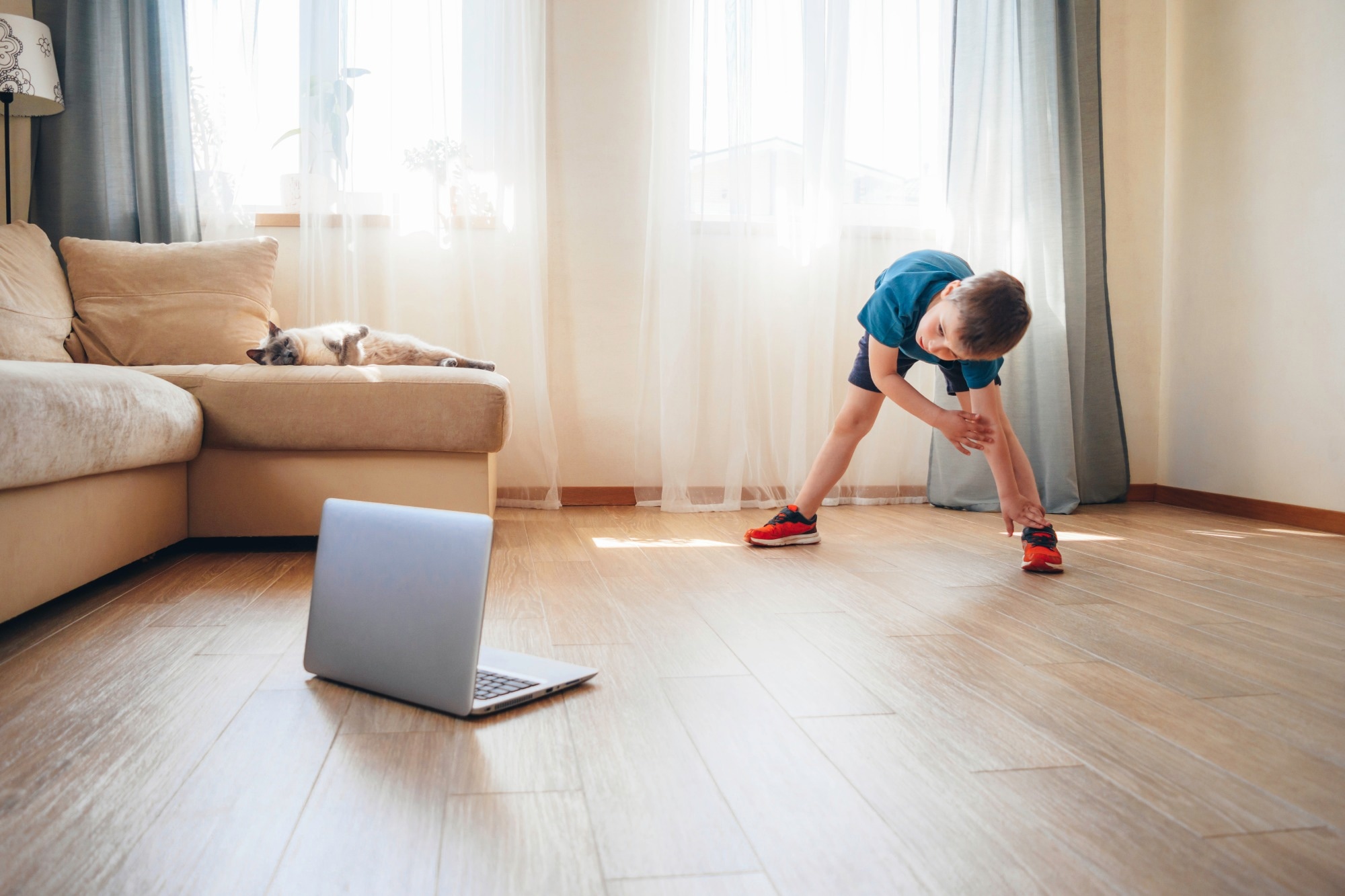New research reveals that brief, fun workout videos created during the pandemic still get kids moving, burning energy, boosting fitness, and keeping exercise enjoyable right from home.
 Study: Energy expenditure and enjoyment of instructor-led exercise videos for children ages 7–13. Image credit: AlexandraKa/Shutterstock.com
Study: Energy expenditure and enjoyment of instructor-led exercise videos for children ages 7–13. Image credit: AlexandraKa/Shutterstock.com
In a recent study published in PLOS One, researchers determined the acute effects of “Interrupting Prolonged Sitting with ACTivity (InPACT) at Home” exercise videos on physical activity energy expenditure (PAEE) and enjoyment in children.
Youth physical activity programs had become a top priority during the coronavirus disease 2019 (COVID-19) pandemic for behavioral interventionists working to maintain children's well-being and health. Physical activity is among the most effective means to promote health, prevent disease, and enhance immunity. Yet, with school closures limiting physical education and athletic activities, there was a pressing need to explore opportunities to engage in physical activity at home.
Thus, InPACT at Home was developed during the COVID-19 pandemic; the intervention involves instructor-led, high-quality exercise videos to promote physical activity at home. These videos were designed to promote cardiometabolic health through intermittent exercises, including cardio, mindfulness, and sports skills. Improvements in cardiometabolic outcomes in childhood could reduce disease risk later in life.
Studies have shown the effectiveness of intermittent exercise in preventing excess weight gain and improving cardiometabolic outcomes in adolescents and children. InPACT at Home was also designed to promote enjoyment of physical activity, a key motivational factor for engaging in and sustaining activity over time. Although InPACT at Home has attained substantial reach, there is limited information regarding its short-term effects on physical activity enjoyment and PAEE.
About the study
In the present study, researchers examined the acute effects of InPACT at Home videos on physical activity enjoyment and PAEE in children. Individuals aged 7–13 were recruited in Michigan. A total of 41 participants were enrolled, and 39 completed the full study protocol. On the experimental condition day at the study research laboratory, participants completed anthropometric measures, demographic questionnaires, a warm-up walk, a fitness test, five exercise videos, and one control video.
A three-minute Kasch Pulse Recovery step test was administered to assess cardiorespiratory fitness. Baseline PAEE was determined while watching a neutral-affect control video without engaging in physical activity. This was followed by a 5–10-minute rest break, a six-minute self-paced warm-up walk, and another break. Participants completed five eight-minute InPACT at Home exercise videos.
Five videos were randomly selected from four categories: cardio, sports skills, strength, and mindfulness. Subjects were asked to follow along with the videos to the best of their abilities. PAEE was measured during activity periods using a portable metabolic system. Enjoyment of physical activity was assessed using a revised physical activity enjoyment scale. A two-way analysis of variance was performed to evaluate changes in physical activity enjoyment and PAEE.
Findings
The study included 39 children (21 females and 18 males); 20% were Hispanic and 15% were non-White. On average, participants had good fitness levels. The overall PAEE was significantly different between control and exercise videos. Participants expended significantly more calories during the exercise videos than during the control video.
On average, 22 kcal were expended per exercise video, leading to a total energy expenditure of 110 kcal. All video categories resulted in a significantly higher PAEE than the control video. Of note, there were significant differences in PAEE between mindfulness and cardio, strength and cardio, and sports skills and cardio videos. Further, PAEE significantly differed by age and sex.
That is, males and children aged 7–13 expended significantly more calories during exercise than females and children aged 7–10. Notably, while overall enjoyment did not differ significantly between all exercise and control videos, cardio videos elicited significantly greater enjoyment than both mindfulness and control videos.
There were no significant differences in enjoyment of physical activity by sex. However, significant differences were evident by age; children aged 11–13 had lower enjoyment during exercise videos than those aged 7–10.
Conclusions
Children expended 22 kcal per exercise video; males and older children had greater PAEE likely due to differences in exercise intensity, body size, and muscle mass. While the videos were generally effective, factors like sex and age may influence the dose/amount of physical activity. All children rated videos as enjoyable, with no differences between sexes.
However, the study found that only cardio videos produced higher enjoyment ratings than mindfulness or control sessions, indicating that enjoyment effects may vary by activity type.
Because the study was conducted in a controlled laboratory environment, the authors note that results may differ when children engage with InPACT at Home videos in real-world home settings.
These results indicate that InPACT at Home videos can effectively increase PAEE and are generally rated as enjoyable by children, supporting their potential to promote physical activity at home.
Download your PDF copy now!